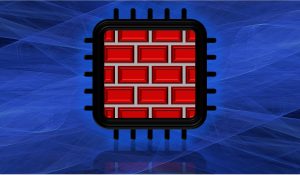


Scaling the Network Wall in Data-Intensive Computing
Previous posts in the Computer Architecture Today series have explored how the broader adoption of smart NICs is providing applications a mechanism to push computation closer to the data and inside the network stack to hide the latency of accessing remote memory in a...
Artifact Evaluation for Reproducible Quantitative Research
We all love good ol’ architecture research! From a germ of an idea, through a thorny path of its implementation and validation, to its publication. With its publication, hopefully comes its adoption. With its adoption, grows our reputation. With our reputation, come to us many good things including fantastic colleagues and lucrative grants! Therefore, it ought to bother us a great deal when good ideas get no adoption. And that’s why we care deeply about understanding and eliminating barriers to successful adoption. In this blog post, we discuss “Artifact Evaluation” to foster wider adoption of computer architecture ideas.

Please Disclose Security Vulnerabilities!
In a recent opinion post on security disclosures, Uht questions if the public disclosure of hardware security vulnerabilities has had any benefits, and suggests that it would be better not to disclose these vulnerabilities. As Uht points out, debate on security...
Hitting an Accelerator Wall: When Specialized Chips Meet the End of Moore’s Law
Background These are exciting and challenging times for computer architects. The looming end of Moore’s law and the breakdown of Dennard scaling force everybody to put on their thinking caps and envision what future processors will look like when transistors...
Let’s Keep it to Ourselves: Don’t Disclose Vulnerabilities
There are millions of viruses, etc., in the wild today. Countless new ones are devised by black-hat hackers all the time. In order to proactively defend against new exploits, some white-hatters seek out or create weaknesses or vulnerabilities and then devise fixes for them. However, in some cases, such as Spectre, fixes are not readily apparent, either to the inventor or the vendor of the target software or hardware. Regardless of the existence of a fix or not, the question arises as to what to publicize or disclose about the vulnerability. We argue that no public disclosure should be made at all, until and unless the exploit appears in the wild.

Why the GPGPU is Less Efficient than the TPU for DNNs
The GPGPU’s massive multithreading is unnecessary for DNNs, and imposes performance, area, and energy overheads. By avoiding such multithreading, the TPU is more efficient.

The Case for Quantum Computing
In a recent IEEE Spectrum article, Mikhail Dyakonov makes The Case Against Quantum Computing, focusing on the idea that building a quantum computer would require precise control over 2300 continuous variables. This view is absolutely correct if we were building an...
The Year in Review


